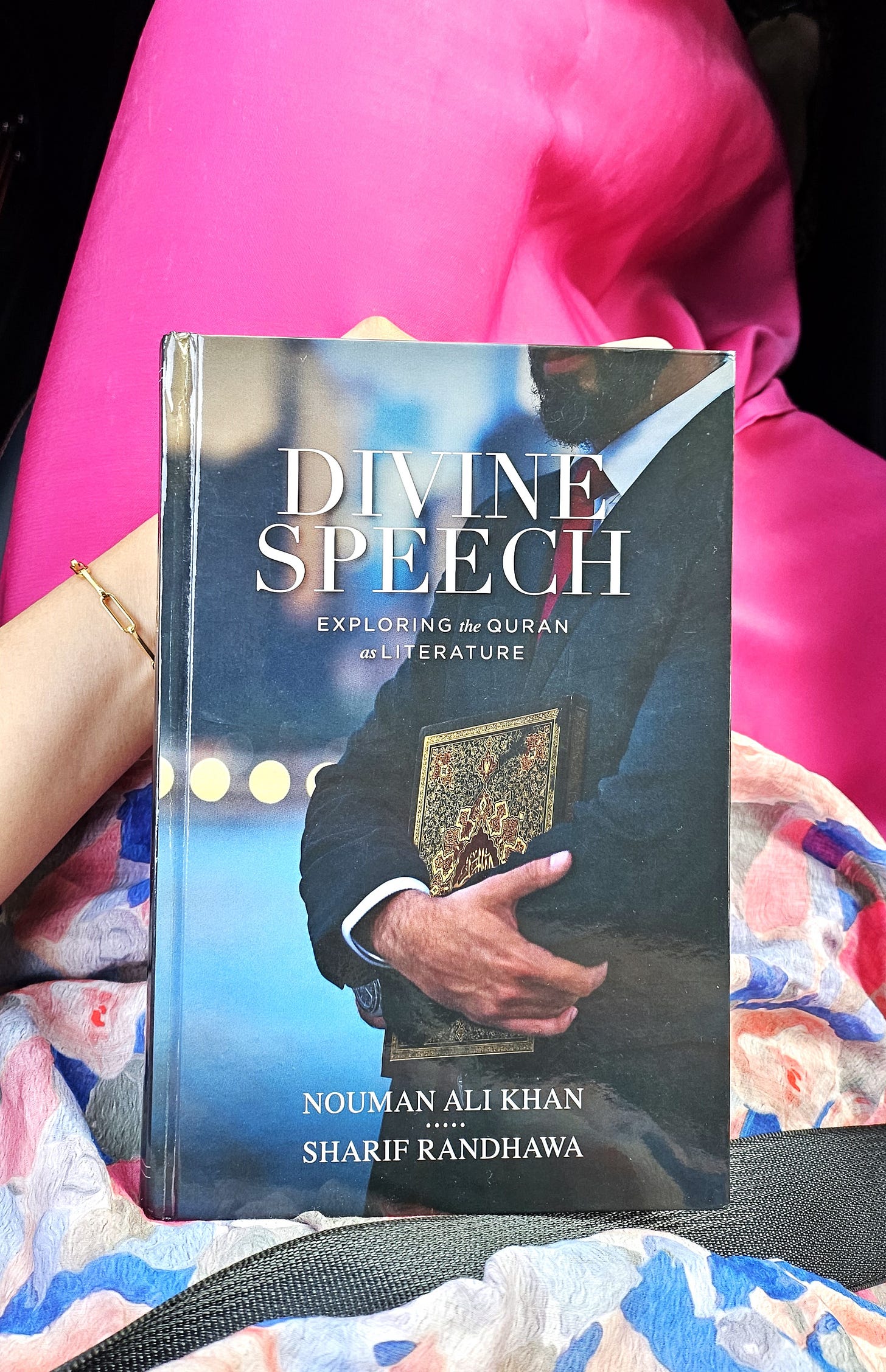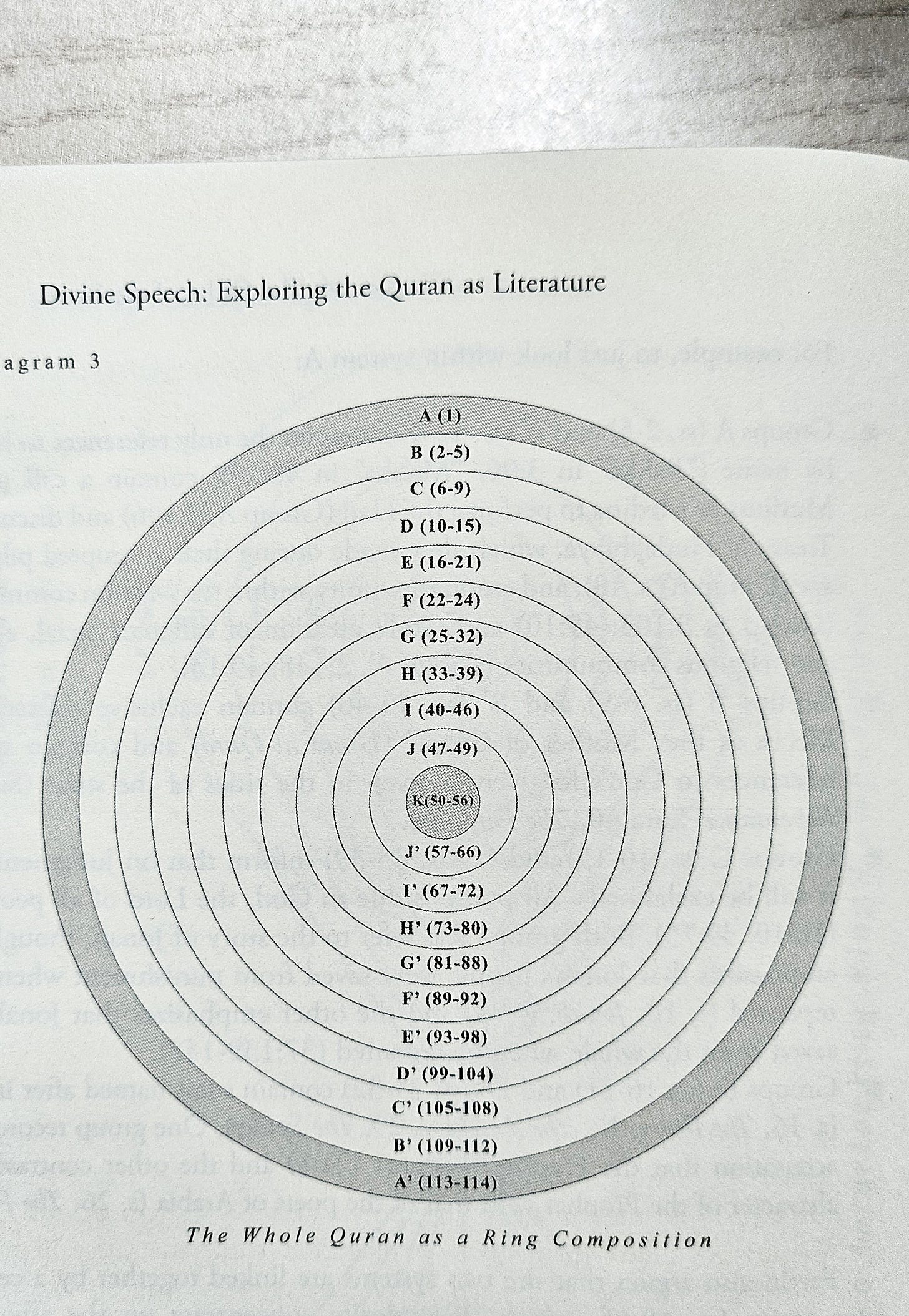Continuing my previous book review of Divine Speech by Nouman Ali Khan and Sharif Randhawa, I would like to share my 2 other best takeaways from the book ✌️
You can read the Divine Speech (Pt. I) review here, where I discuss the ring formation of the verses in The Quran, its choice of word order, and the storytelling in The Quran.
1. Word Choice of The Quran
Classical Arabic is a special language because it offers huge options for expressing ideas. Context, imagery, sound, and meaning can influence which Arabic word to choose. In this case, the precise word choice in The Quran truly reflects the particular context of the ayahs (sentences).
Let me give you 2 examples:
🌧️ Rain
The Quran uses different Arabic words to refer to rain. Most frequently, The Quran talks about rain using (ma), which means water or water sent down from the sky. In this context, using (ma) is highlighted as divine mercy, to the extent that even revelation is compared to the rain. Rain gives life to the dead (plants coming out of the soil after rain 🌵), similar to how revelation gives life to dead hearts.
The Quran also uses (ghayth) and (matar) to describe rain in different contexts.
(Ghayth) is derived from the word (ghawth) meaning help. For the people in the Arabian Desert, the coming of rain is always positive and life-giving. Thus when describing positive context, The Quran uses (ghayth) to refer to rain.
On the other hand, numerous passages of The Quran also highlight the rain’s capacity for punishment. In these cases, The Quran uses (matar) to refer to rain in a more negative context.
🏠 Settlement
Even after Moses and the Israelites were miraculously saved from Pharaoh and his army, the Israelites continued to be ungrateful towards God. For example, God provided them sustenance in the form of manna, quails, and springs of water. But the Israelites kept complaining about having to eat the same food day after day.
From Surah 2: The Cow (Al Baqarah)
Remember when you said “O Moses, we cannot bear only one kind of food. Call upon your Lord to bring forth to us what the earth produces of its green herds, its cucumbers, its garlic…// He said, “Would you exchange what is better for what is inferior? Go down to a settlement (misran). Then you will have what you have asked for!”
Humiliation and misery struck them, and they drew on themselves God’s wrath.
You see, the Arabic language has many words to describe settlements/towns/countryside but the word chosen for this ayah is (misran). It is astounding how similar the word (misran) is to the word for Egypt, which is (misr) 🤯
The wordplay here is striking and highly meaningful. The Israelites could have only known the food from their experience in Egypt as they lived their entire lives there. Thus when Moses replies “Go down to (misran). Then you will have what you asked for!”, he is implying “Go back to Egypt, where you have suffered as slaves if you insist on having that food again!
Moses’ statement, “Then you will have what you have asked for!” was actually pointing out what the Israelites were really asking for by being ungrateful. This is illustrated in the next sentence: humiliation, misery, and wrath from God. This recalls the suffering the Israelites had in Egypt: the humiliation as lowly slaves, the misery as they were powerless to escape, and the wrath of Pharoah 🤯
Reading this chapter makes me appreciate the Arabic language even more. It is one of the hardest languages in the world to learn but I think you can be a lot more appreciative of The Quran 💕 if you can make an effort to learn the language it comes in.
2. Why Are The Surahs Arranged in This Order?
One of the most often-heard remarks about The Quran is on its arrangement. At a glance, the surahs appeared to be neither placed chronologically nor arranged into discrete topics. The longest surahs are at the beginning and the shortest surahs are placed at the end!
Divine Speech shows a few ideas that might explain why the surahs in the Quran are arranged the way they are:
🕊️ Dovetailing
Some consecutive surahs appear to have interconnections, in which a keyword, phrase, or image that occurs towards the end of one surah, appears at the beginning of the next. This links the two surahs together.
Some examples:
In this way, it is easy to see why the surahs are arranged the way they are now. However, it’s important to keep in mind that not all surahs are connected like this especially the short surahs placed at the end of The Quran.
🔗 Surah Pairs
Some scholars argue that surahs that share strong commonalities in structure, theme, subject matter, and style appear to be grouped together. Some also argue that most of the surahs form a pair with the surah immediately before or after it.
The pair can complement each other in one of the following ways:
what one surah states in brief, the other explains in detail;
what one surah states as a principle, the other illustrates through example;
what one surah lays out as premise, the other uses to argue for a conclusion; etc.
For example, in Surah 55 The Merciful (Ar-Rahman), and Surah 56 The Inevitable Event (Al-Waqi’a), we can see how these two surahs pair perfectly with each other.
🪐 Symmetry of The Whole Quran
As I mentioned in the 1st part of the Divine Speech review (read here), the ayahs in the surahs are symmetrical through a ring formation. Therefore it should not be a surprise that some scholars argue that the surahs in The Quran might be arranged in a way that reflects the ring formation as well!

Referring to the picture above, we can see that the surahs might have been arranged in 10 ring formations (A-J) with a center (K). One of the examples given in the book of themes/anchors connecting the rings is as follows:
While this view (the ring formation of the whole Quran) best be treated as a hypothesis at this point, this theory raises the potential prospects of further studies and refinement 😇
Final Thoughts
While the study of The Quran is yet to be exhausted, what I have read in Divine Speech by Nouman Ali Khan and Sharif Randhawa is already enough to blow my mind. The Quran is coherent and intricate in its literature, and it is not made haphazardly.
Thank you so much for reading! Please subscribe and share with your friends and family if you love this post.
Salam Ramadhan :)
Ristina xx
Hey friends!
I intend to write short reviews of books I read and share them with you. I love reading but often struggle to find good book recommendations, so I thought, hey why not share my thoughts with other like-minded readers?
Shelves Upon Shelves is a simple book review for those who are always looking for good book recommendations but don’t want to flip through thousands of reviews and comments on Goodreads/forums/blogs.
This newsletter will arrive in your inbox every Friday so subscribe if you’d like to receive small book recommendations to read on the weekends!









